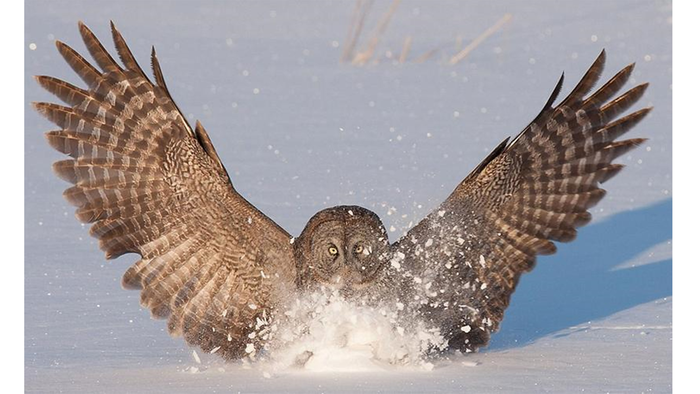Owl wing-inspired design reduces noise from aircraft engines, study finds
Owls produce about 18 decibels less noise than other birds at similar flight speeds due to wing design

The serrated edge of owl wings, which help the birds swoop down stealthily on unsuspecting prey, can help inform better designs that cut noise from aeronautical and turbine engines, according to a new study.
Noise generated by aircraft engines and wind turbines is mainly produced when airflow passes along the trailing edge of their curved blade airfoil designs, the study published in the journal Physics of Fluids noted.
While previous research has predicted that serrations on the trailing edge can suppress sound from airfoils, exactly how these could cut noise, and whether these design changes produce universal effects, remained to be seen.
In the new study, researchers from Xi’an Jiaotong University in China used noise calculation and analysis software to study airfoils with characteristics reminiscent of owl wings.
“Nocturnal owls produce about 18 decibels less noise than other birds at similar flight speeds due to their unique wing configuration,” study author Xiaomin Liu said in a statement.
“Moreover, when the owl catches prey, the shape of the wings is also constantly changing, so the study of the wing edge configuration during owl flight is of great significance,” Dr Liu added.
Researchers explained that noise is produced in an airfoil mainly when airflow passes along its back, forming a turbulent layer of air along the upper and lower surfaces. When this layer of air flows back through the trailing edge, they said that it scatters and radiates noise.
While blade designs in rotating turbo-machinery have matured over the years, the scientists said noise reduction technology is “still at a bottleneck”.
“The noise reduction capabilities of conventional sawtooth structures are limited, and some new non-smooth trailing-edge structures need to be proposed and developed to further tap the potential of bionic noise reduction,” Dr Liu said.
Their study using an owl-inspired serrated airfoil design suggests that optimising the shape of the edge suppressed the noise, and particularly, asymmetric serrations reduced the noise more than their symmetric counterparts.
The modelling study indicated that noise reduction varies with different conditions, suggesting that the designs should be further evaluated based on the specific application of the airfoil, such as in wind turbines or aircraft engines.
Subscribe to Independent Premium to bookmark this article
Want to bookmark your favourite articles and stories to read or reference later? Start your Independent Premium subscription today.

Join our commenting forum
Join thought-provoking conversations, follow other Independent readers and see their replies